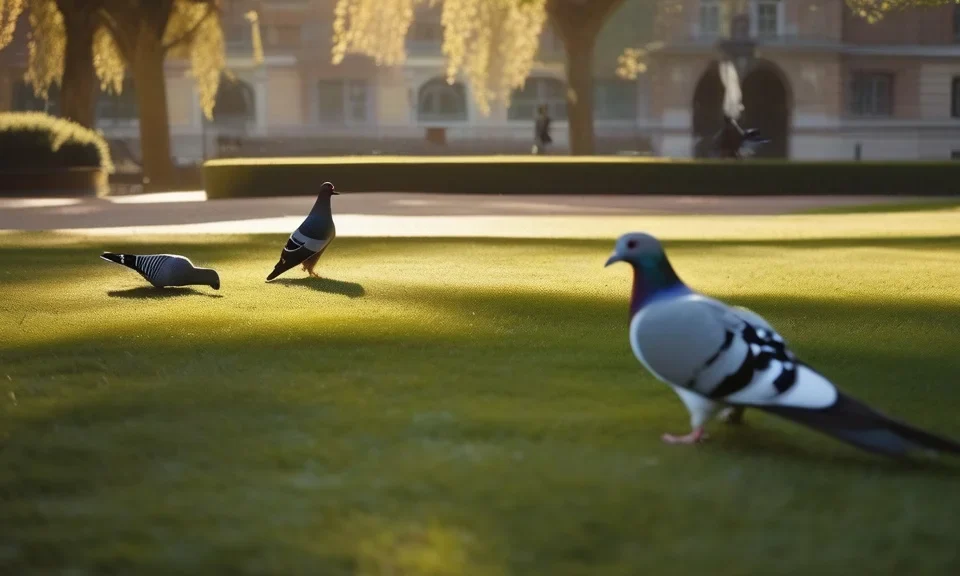Pigeons are highly intelligent birds known for their navigational abilities and strong homing instincts. They have been trained for various purposes throughout history, from carrying messages during wartime to participating in racing competitions. Training pigeons to fly with precision and enhancing their flying skills requires patience, understanding of their behavior, and consistent training techniques. In this article, we will explore the key aspects of pigeon training and their flying skills.
Key Takeaways
- Pigeons have strong homing instincts and can be trained to fly long distances.
- Training pigeons involves building a bond with them, understanding their behavior, and using positive reinforcement techniques.
- Free flying and regular exercise help pigeons develop their flying skills and strengthen their bond with their handlers.
1. Training Techniques for Pigeons
To train pigeons effectively, it is important to understand their behavior and cognitive abilities. Here are some key techniques used in pigeon training:
Bond Building:
Building a strong bond with pigeons is essential for successful training. Spend time with them regularly, hand feed them, and use positive reinforcement to create a positive association with their handler.
Positive Reinforcement:
Positive reinforcement techniques involve rewarding pigeons for performing desired behaviors. This can be done through the use of treats, praise, or clicker training. By reinforcing behaviors such as returning to the loft or following commands, pigeons learn to associate those behaviors with positive outcomes.
Target Training:
Target training involves teaching pigeons to touch or land on a specific target, such as a stick or a platform. This can be used to guide them to land in a certain area or to perform specific tasks.
Flight Training:
Flight training involves gradually increasing the pigeons’ flying distances and duration. It starts with keeping them in an enclosed building, such as a loft, for a few weeks to establish it as their home. Then, the loft door is opened gradually, allowing the pigeons to fly short distances and gradually increasing the distance over time.
2. Flying Skills of Pigeons
Pigeons possess remarkable flying skills and adaptations that enable them to navigate over long distances. Here are some key aspects of their flying abilities:
Homing Instinct:
Pigeons have a strong homing instinct, which allows them to find their way back to their loft over vast distances. This instinct is believed to be based on a combination of celestial cues, magnetic fields, and visual landmarks.
Pigeons are skilled navigators and can use a combination of visual cues, magnetic fields, and olfactory cues to find their way home. They have been observed to rely on landmarks, sun position, and Earth’s magnetic field for navigation.
Flying Speed:
Pigeons can fly at impressive speeds, with estimates ranging from 50 to 60 miles per hour. Their flying speed can be influenced by various factors, including wind conditions, temperature, and their physical condition.
Endurance:
Pigeons are known for their endurance and can fly long distances without rest. They have been recorded to fly over hundreds of miles in a single journey, utilizing their efficient flight techniques to conserve energy.
3. Training for Racing Pigeons
Racing pigeons require specialized training to improve their flying speed and endurance. Here are some key training methods for racing pigeons:
Regular Exercise:
Regular exercise is crucial for racing pigeons to build their stamina and flying capabilities. This can include free flying, loft flying, and controlled training flights to improve their strength and endurance.
Supplements and Nutrition:
Racing pigeons require a well-balanced diet and additional nutritional supplements to support their physical demands. Proper nutrition and hydration contribute to their overall health and flying performance.
Training Races:
Training races allow pigeons to develop their racing skills and adapt to different flying conditions. These races simulate the actual racing environment, helping pigeons gain experience and improve their performance.
In conclusion, training pigeons to enhance their flying skills requires a combination of understanding their behavior, consistent training techniques, and positive reinforcement. Pigeons possess remarkable flying abilities and can be trained to fly long distances with precision. Whether it’s for racing competitions or showcasing their skills, proper training and care are essential to maximize their potential.








